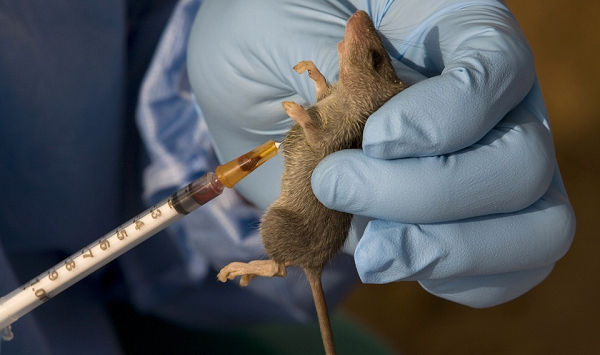One person has died after he was diagnosed with Lassa Fever, a disease that has killed at least 54 people in Nigeria within the past seven weeks.
The man, 26, reportedly died at the Tema General hospital in the Greater Accra Region.
The infection was confirmed by the Noguchi Memorial Institute, Myjoyonline.com has learnt.
Interacting the media Thursday, Director-General of the Ghana Health Service, Dr Anthony Nsiah-Asare confirmed the death but said the Service is working to stop the spread of the disease.
Lassa Fever is transmitted to humans via contact with food or household items contaminated with the urine, saliva faeces, and blood of infected rodents.

About 80% of the people who are infected with Lassa virus have no symptoms. One in five infections results in severe complications, with the virus affecting several organs such as the liver, spleen and kidneys.
It occurs in all age groups, both sexes and persons at the greatest risk are those living in rural areas, according to the World Health Organisation (WHO).
Demonstrating the preparation of the country, Dr Nsiah-Asare said currently all the frontline staff at the hospital that handled the patient before he died, were being screened.
He said further investigations to trace the background and all contacts of the deceased, were being pursued to prevent the spread of the virus.

Dr Anthony Nsiah-Asare
The GHS Director-General has called on the public to be extremely cautious of rodents, recommending good hygiene.
He also urged the public to report any suspected case of the disease.
Symptoms of Lassa fever
The incubation period of Lassa fever ranges from 6–21 days. The onset of the disease, when it is symptomatic, is usually gradual, starting with fever, general weakness, and malaise.
After a few days, headache, sore throat, muscle pain, chest pain, nausea, vomiting, diarrhoea, cough, and abdominal pain may follow. In severe cases, facial swelling, fluid in the lung cavity, bleeding from the mouth, nose, vagina or gastrointestinal tract and low blood pressure may develop.
Protein may be noted in the urine. Shock, seizures, tremor, disorientation, and coma may be seen in the later stages. Deafness occurs in 25% of patients who survive the disease. In half of these cases, hearing returns partially after 1–3 months. Transient hair loss and gait disturbance may occur during recovery.
Death usually occurs within 14 days of onset in fatal cases. The disease is especially severe late in pregnancy, with maternal death and/or fetal loss occurring in more than 80% of cases during the third trimester.
Latest Stories
-
Armah-Kofi Buah is the light of Western Region – NDC Regional Secretary praises Ellembelle lawmaker
43 mins -
‘Go back to Supreme Court’ – Dafeamekpor tells Afenyo-Markin over Speaker’s refusal to recall Parliament
1 hour -
EC’s Restriction on Media Accreditation: A threat to Ghana’s democracy and press freedom
1 hour -
Bawumia will sign peace pact on Thursday – Campaign
1 hour -
Ghanaian dancehall sensation CantCool makes waves in OKC
1 hour -
Ghanaians must learn to embrace new characters – Safo Newman
1 hour -
AGA MD crowned Mining Personality of the Year at 10th Mining Industry Awards
2 hours -
Increase in cocoa price has reduced cocoa smuggling – Kuapa Kokoo MD
2 hours -
Rev. Mary Ghansah’s ‘More Than A Song’ event slated for December 1
2 hours -
EC’s collation centre media limit could undermine transparency – Dr Kojo Asante
2 hours -
COP29: Young people prevail on G20 countries to deliver climate finance
2 hours -
EC urges political parties to avoid wasting resources on monitoring electoral material transport
2 hours -
Unlock Tomorrow’s Innovations, Utilise Technology: Our chance at progress: Join us at the IN’TECH Forum!
2 hours -
New era in public transport sector as Bawumia launches affordable electric buses
2 hours -
WHO Africa incoming director dies aged 55
2 hours

